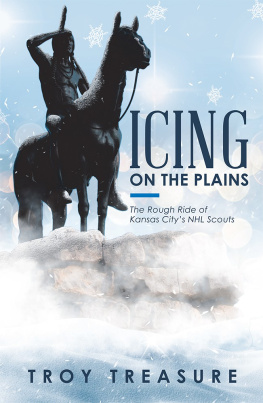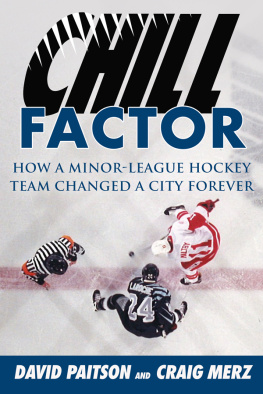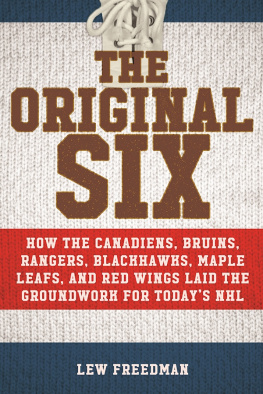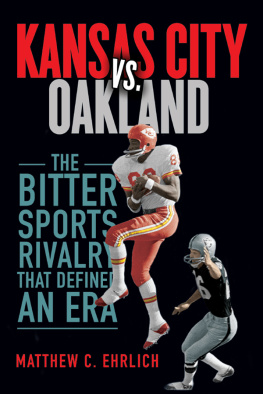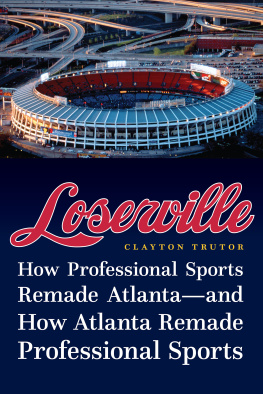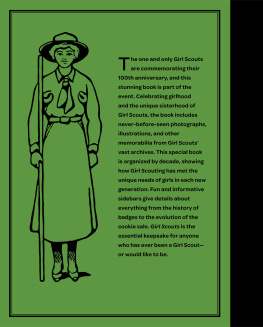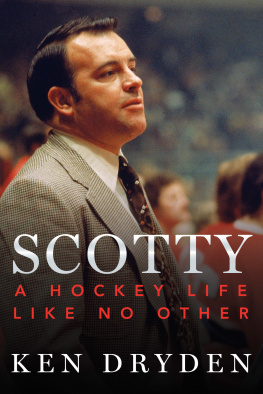ICING ON THE PLAINS
The Rough Ride of Kansas Citys NHL Scouts
TROY TREASURE

Copyright 2018 Troy Treasure.
Photo courtesy of Bob Busser
http://www.ballparks.smugmug.com
All rights reserved. No part of this book may be used or reproduced by any means, graphic, electronic, or mechanical, including photocopying, recording, taping or by any information storage retrieval system without the written permission of the author except in the case of brief quotations embodied in critical articles and reviews.
Balboa Press
A Division of Hay House
1663 Liberty Drive
Bloomington, IN 47403
www.balboapress.com
1 (877) 407-4847
Because of the dynamic nature of the Internet, any web addresses or links contained in this book may have changed since publication and may no longer be valid. The views expressed in this work are solely those of the author and do not necessarily reflect the views of the publisher, and the publisher hereby disclaims any responsibility for them.
The author of this book does not dispense medical advice or prescribe the use of any technique as a form of treatment for physical, emotional, or medical problems without the advice of a physician, either directly or indirectly. The intent of the author is only to offer information of a general nature to help you in your quest for emotional and spiritual well-being. In the event you use any of the information in this book for yourself, which is your constitutional right, the author and the publisher assume no responsibility for your actions.
Any people depicted in stock imagery provided by Getty Images are models, and such images are being used for illustrative purposes only.
Certain stock imagery Getty Images.
ISBN: 978-1-9822-1406-7 (sc)
ISBN: 978-1-9822-1405-0 (hc)
ISBN: 978-1-9822-1407-4 (e)
Library of Congress Control Number: 2018912008
Balboa Press rev. date: 11/05/2018
To Lucille Hays, Jean Schaffer and Sylvia Treasure
CONTENTS
This book is the result of a childs fascination with a certain citys professional hockey team that competed during a brief period in the 1970s. It was this authors first exposure to the sport.
Kansas City Hockey Associates were granted a conditional National Hockey League franchise for $6 million June 8, 1972. The team would begin play in the 1974-75 season along with a club in Washington D.C. The Washington Capitals still exist to this day, though their pursuit of a Stanley Cup championship was time and time again frustratingly elusive for Caps fans until June 7, 2018.
The Kansas City Scouts are now the New Jersey Devils by way of Denver; renamed the Colorado Rockies several years before there was a Major League Baseball team of the same name. The hockey Rockies existed for six seasons before relocation to the east coast. In New Jersey, the franchise continued to struggle on the ice, becoming known as The Meadowlands Also-Rans. Then, almost inexplicably, the tide turned. The Devils won three Stanley Cups since moving from Denver, along the way becoming a major player in New York Citys professional sports scene.
But back to the Kansas City hockey franchise. Contingent on completion of a $22 million construction project known initially as the R. Crosby Kemper Memorial Arena, the Scouts would be a co-tenant with the National Basketball Associations Kansas City-Omaha Kings. Formerly the Rochester and Cincinnati Royals, the NBAs Kings still exist, as well in Sacramento, California. The Scouts would be built from scratch. Without them the Kings likely would not have received their new modern digs, later simply referred to as Kemper Arena or Kemper .
A little-known fact is that the Scouts original name was rejected by the NHL forcing them to change it before a single skate touched the ice. The team was originally set to be the Kansas City Mo-Hawks, paying homage to the border states of Missouri and Kansas. However, the Chicago Blackhawks, then spelled Black Hawks, objected claiming Mo-Hawks too closely resembled their moniker.
The club was renamed in honor of The Scout, a 10-foot statue overlooking part of Kansas City, Missouri. The monument depicts a Sioux tribesman on horseback with hand shading the sun looking toward the plains of Kansas.
Then-Kansas City television station KBMA must be acknowledged with an important role in how this book came about. Channel 41 was an independent outlet in the 1970s, meaning it was not affiliated with any of the major over-the-air American networks of the time: ABC, CBS and NBC . In the mid-1970s, KBMA was distributed to regional cable systems in the United States Central Plains. As part of its programming, Channel 41 televised a limited number of Scouts and Kings road games.
To help fill out the rest of its daily broadcast schedule, the station aired early syndicated versions of the religious-themed news magazine The 700 Club , as well as reruns of Leave It to Beaver , Speed Racer , Star Trek and The Munsters . Weeknights at 10, KBMA aired compilations of the Julius Groucho Marx game-show series You Bet Your Life , then-billed as The Best of Groucho . Say the secret word and you win $100. The little boy watching on a small color-television set was entertained by many of those programs, as they provided the perfect entre to the hockey telecasts.
To a lesser extent, radio station WDAF 610-AM was a window into the world of the Scouts. Dick Carlson provided the play-by-play, painting outstanding word pictures.
More importantly, though, the boy developed sports idols by watching Kansas Citys Lynn Powis skate down the ice with his blond hair seeming to blow in the air while goaltender Denis Herron made big saves in net. The Kings also provided thrills with dazzling Nate Tiny Archibalds wizardry in the backcourt. Center Sam Lacey crashed the backboards . The child, and now author, later got to know and work with Lacey on the minor-pro basketball circuit. Sam died in 2014.
However, it was the hockey club that stirred the childs imagination the most and still resonates in the mind of a now middle-aged man.
When asked what his favorite sport was, Dick Schaap always responded with a one-word answer: People. To that end, this endeavor is an attempt however flawed to recount the history of the Kansas City Scouts and 1970s hockey as told or influenced by the people who actually experienced it.
This is also the story of a citys attempt to integrate major-league hockey into its sports marketplace, only to see it fall through thin ice .
Wed like to be as good as we can as quickly as we can, but trying to put a timeline on that is hard. We just want to be in a position where we can entertain and be competitive and have people here really grab onto the sport and keep them coming back until we can go from a competitive to a contender stage.
Vegas Golden Nights general manager George McPhee, 2017
I just would hate to think hockey wouldnt be here. Even though Kansas City is one of the smaller cities in major-league sports, I think hockey can sell itself here. But you have to have the product to sell the sport, and were just lacking in product right now. Thats where a winning team comes in. If we are winning, then we can get a true picture of how well hockey will do in this town.
Kansas City Scouts general manager Sid Abel, 1976
CHAPTER 1
K.C. AS A BIG-LEAGUE CITY
Steeped with deep tradition in college basketball and baseball, particularly the Negro Leagues, Kansas City also possessed minor-professional hockey history dating to the first half of the 20 th century.
The towns first team, known as the Kansas City Pla-Mors, started play in 1927 as a member of the American Hockey Association. Home ice was Pla-Mor Arena located at 31 st and Wyandotte, just off Main. Hockey-like weather bitter cold and snow arrived for the Pla-Mors. Vern Banks, later co-owner of a reincarnated version of the Pla-Mors, recalled the clubs home debut.
Next page
